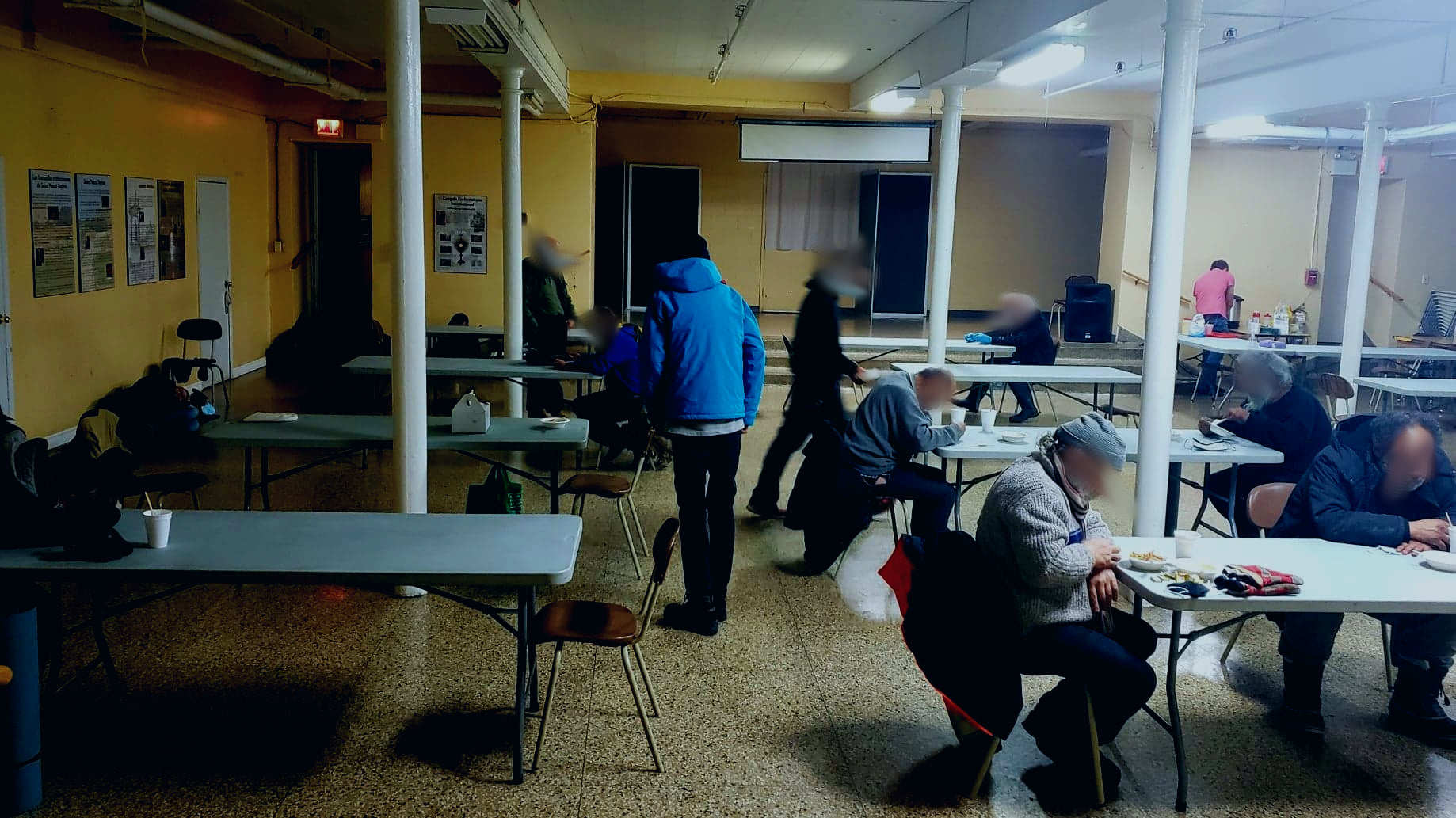A little warmth for the homeless of Côte-des-Neiges

Montreal
In this cold season, those who are homeless are particularly vulnerable, above all in the context of the pandemic, with health regulations severely limiting the capacity of shelters. The Notre-Dame-des-Neiges parish social pastoral team, along with other community organizations in the neighbourhood, has had both hands in the ‘‘sludge’’ since it opened the Côte-des-Neiges Warming Centre in December.
The Côte-des-Neiges Warming Centre is the outcome of a pilot project conducted by several organizations that came together around the Table de concertation de lutte à l’itinérance de Côte-des-Neiges (Côte-des-Neiges Homelessness Roundtable). Côte-des-Neiges social pastoral agent Diego Saavedra Renaud and his team contributed actively to the project.
Unfortunately, the premises chosen initially proved to be much too small in the context of the pandemic, and the project could no longer be handled by the organization originally selected. It was then that Diego proposed the basement of the Saint-Pascal-Baylon church, so that the project could be set up – in three short weeks – in order to offer this vital space to the homeless people of Côte-des-Neiges. ‘‘The problem is that when COVID-19 hit, everything shut down, so these people were staying all night at Tim Horton’s, for instance. As long as they were quiet, they were relatively well tolerated by the shopkeepers, at 25o outside…’’ But in the context of the pandemic, people no longer have places to eat or warm up, even for just a few hours. Fortunately the pilot project was wrapped up last year, so the Côte-des-Neiges Warming Centre was able to see the day – or rather the night!
This is a place where people who are homeless can come and warm up at night. It welcomes men and women, whoever they are, as long as they are peaceful and quiet so that everyone can sleep. The doors open at 7:45 am from December to March. Soups, sandwiches and coffee are offered on the premises. Floor mats are installed separated by panels to form small cubicles for those who wish to sleep.
Public-health measures limit their maximum capacity to 30 persons, and the Centre ‘‘is running at full capacity at the moment.’’ A day stop has just opened its doors in the same space from Monday to Friday, from 10:30 am to 3:30 pm. ‘‘The problem is that, well, they leave at 6 am, and they come back at 7:45 pm. We thought that was a bit cold and long.’’ Volunteers are present on the premises night and day.
Visible and invisible homelessness
The concept of a warming centre exists in several Montreal neighbourhoods. At the moment there is a high concentration of people in the downtown area, which is experiencing maximum saturation much more rapidly, as places are very limited. ‘‘It’s a little like the hot potato game, in that the downtown centres are taken, so they send people out to areas farther out’’ using a shuttle system. ‘‘There’s a whole lot of people,’’ says Diego. However, in Côte-des-Neiges, there is a core group of homeless people. Visible homelessness is one thing, but there is also hidden homelessness. There are people who sleep in their cars or at friends’ homes, people who live in rooms, some who take turns sharing a bed and alternate between sleeping and taking a shower. So we have hidden homelessness in Côte-des-Neiges, which is also a problem of residential instability. Then there are some people who are chronically homeless, ‘’ he explains. As he points out, several boroughs in the city of Montreal have difficulty sometimes admitting that a homeless population exists who therefore require resources for eating and sleeping in geographic proximity on cold winter nights.
Strong solidarity
‘‘Something that struck me rather positively is that the people in the neighbourhood care about their place, they are really happy that this space is open to them and they want to keep it open. So they take care of it. When there’s a troublemaker, they’ll talk to the person. They make sure on their own that the place is clean, they wash the dishes, they cook (during the day) and really a beautiful bond has sprung up among the group. Of course, at night the people are here to sleep, so there is less social cohesion, which is reinforced by social distancing. But these people who ‘‘are in very difficult circumstances,’’ continues Diego, ‘‘who are rejected and persecuted,’’ they are still so supportive of one another.
Since this project is part of the life of the parish, Diego emphasizes the importance of keeping parishioners informed through awareness-raising efforts working towards greater community cohesion.
List of Côte-des-Neiges community organizations involved in the day and night warming centre: Prevention CDN-NDG, which heads the project; Club Ami; Multicaf; la Table Jeunesse; Femme du Monde in Côte-des-Neiges; and the Côte-des-Neiges social action ministry, supported by Notre-Dame-des-Neiges Parish, which also includes the church of Saint-Pascal Baylon.

Comment
Comment
Add new comment